Summary: Call it the Amphibia (correctly); call it the Amphibian or call it the Восток Амфибия. This beloved automatic is an inexpensive workhorse and a favorite of collectors world-wide.
Background
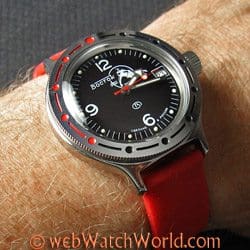 The story of the Vostok Amphibia (aka Amphibian) has been told many times. The Vostok, or Вoctok (“East”) is one of the most popular collectible watches for both beginner or experienced collectors. And certainly the Amphibian is just a good all-around fun watch to wear even if you’re not a collector!
The story of the Vostok Amphibia (aka Amphibian) has been told many times. The Vostok, or Вoctok (“East”) is one of the most popular collectible watches for both beginner or experienced collectors. And certainly the Amphibian is just a good all-around fun watch to wear even if you’re not a collector!
The Vostok factory is still located in Christopol in the Republic of Tatarstan in the Russian Federation (map). Amphibia and other watches have been produced at Vostok on the Kama River since the mid-1940’s and, even with the intense worldwide competition, the company is still producing watches, although the history of the Russian watch making profession is a long and complex tale that almost no one has successfully unraveled!
The Amphibian and the Komandirskie (“Commander”) are the two most famous watches produced by Vostok, but the company also manufactures several other interesting designs.
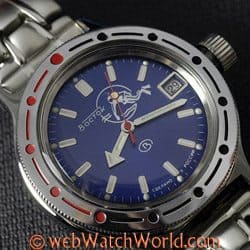 The movements in these watches (2416B automatic in the Amphibia and the 2414 or 2434 in the Komandirskie) have an excellent reputation as somewhat plain but robust and reliable engines. They are also used by other watch manufacturers such as Volmax, Poljot International and Vostok Europe (a somewhat related company and part of that very complex history).
The movements in these watches (2416B automatic in the Amphibia and the 2414 or 2434 in the Komandirskie) have an excellent reputation as somewhat plain but robust and reliable engines. They are also used by other watch manufacturers such as Volmax, Poljot International and Vostok Europe (a somewhat related company and part of that very complex history).
Many Vostok fans will tell you that the Amphibia is one of the best values going. The watch can be found for around $60.00 USD plus, of course, shipping, which usually runs only about $15.00 USD.
Considering that even some of the most storied names in horology do not manufacturer their own movements, buying a sub-$100.00 watch with an “in-house” movement is rather a nose-thumb to those famous makes and indeed, may be one of the reasons why even experienced collectors have a few Vostoks in their stash!
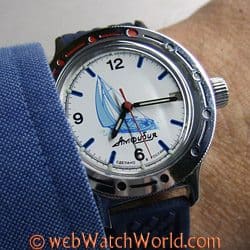 While it may not look like the most modern watch in the world and the quality of parts like the bezel and the bracelet may be wanting, this is a very solid watch with a long and interesting history. That it comes in a huge variety of colors and face designs makes it even more desirable, and you may find that one, two or more Amphibians will end up in your watch box and in regular wrist rotation.
While it may not look like the most modern watch in the world and the quality of parts like the bezel and the bracelet may be wanting, this is a very solid watch with a long and interesting history. That it comes in a huge variety of colors and face designs makes it even more desirable, and you may find that one, two or more Amphibians will end up in your watch box and in regular wrist rotation.
The Amphibian, as the story goes, actually was designed to be a diver’s watch. It has a claimed 200 meter depth rating, which is the minimum number usually considered for a watch to be a true “diver’s watch”. In fact, some Amphibia owners have taken Vostok up on the claim, with underwater photos to prove it!
And a Vostok Amphibia was worn by Bill Murray in the quickly-forgotten movie The Life Aquatic with Steve Zissou…if that means anything. A Watchuseek Russian watch forum member wrote an interesting detailed analysis of the waterproof capabilities of the Amphibian, so be sure to check it out.
The Vostok Amphibia
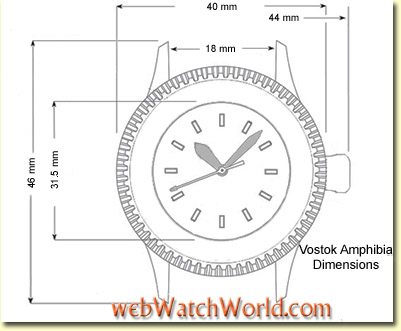 The Amphibia is available in two different case types. The round case on the Amphibians seen in the photos is a classic but the watch is also available in a “Ministry” (sometimes called “Minister’s”) case.
The Amphibia is available in two different case types. The round case on the Amphibians seen in the photos is a classic but the watch is also available in a “Ministry” (sometimes called “Minister’s”) case.
The Ministry case is square or rectangular in shape and takes a 22 mm strap, which allows a wider choice. However, the case shape is such that the watch doesn’t look quite right with every strap, so choose carefully. Otherwise, the Ministry case Amphibian has the same movement and 200 meter depth rating as the round case.
The watch has an acrylic crystal, a screw-on back with a nice gasket underneath and a screw-in crown which operates in, shall we say, a fashion that is unique to the Amphibian. I’ll discuss this further in the Accuracy section below, but this all helps the Amphibia to actually work as a “real” dive watch, unlike many of the pretenders.
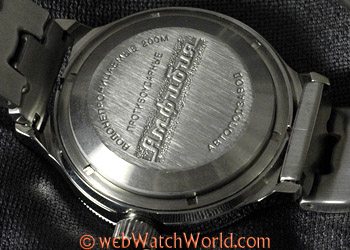 Unlike most watches that are available with either white, black, silver and perhaps blue faces, the Amphibia comes in a huge variety of colors and graphics.
Unlike most watches that are available with either white, black, silver and perhaps blue faces, the Amphibia comes in a huge variety of colors and graphics.
One of the pleasures of collecting Amphibians is finding all of the unique designs, many of them with Russian military themes. But probably the all-time classic Amphibian style is the so-called “Scuba Dude” style, seen in a blue and black version in my photos. The watch is so named because of the scuba diver design on the face.
It’s way too difficult to choose between a black or a blue Scuba Dude Amphibian, so many owners buy both! The black Scuba Dude has numbers only for 6, 9 and 12, with small indices for the rest. It’s a clean design that will always be a classic.
The blue Scuba Dude has raised indices for each hour, which gives the watch a slightly richer appearance — if that can be said for a Vostok Amphibian.
But there are many more designs available, and some, when dressed up with a high-quality strap, look like they’re worth way more than the 100 bucks or so it might have cost to acquire.
Pricing
 There are several vendors of Vostok watches that come recommended by fans of Russian horology. Many collectors around the world purchase their Vostok Amphibians, Komandirskies, Raketas and other Russian watches from “Zenitar” on eBay. I have purchased at least a half-dozen watches from the Zenitar store with no problems at all, fast shipping (usually 10-15 days average to the U.S.) and excellent communications from Victor Goloz, the owner, who lives in Moscow.
There are several vendors of Vostok watches that come recommended by fans of Russian horology. Many collectors around the world purchase their Vostok Amphibians, Komandirskies, Raketas and other Russian watches from “Zenitar” on eBay. I have purchased at least a half-dozen watches from the Zenitar store with no problems at all, fast shipping (usually 10-15 days average to the U.S.) and excellent communications from Victor Goloz, the owner, who lives in Moscow.
Amphibia watches usually cost around $60.00 USD, and the manual-wind Komandirskie is a mere $34.00 USD. There is also an automatic version of the Komandirskie available and the Amphibia name is and has been used on several other Russian watches, so some caution is advised to make sure you understand exactly what you are purchasing before clicking on the “Buy Now” button.
Watch Size and Weight
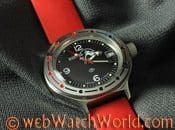 The black Scuba Dude Amphibian shown in the photos measures 0.2 millimeters less than 40 mm for the watch case and it is 14.4 mm thick. The watch is considered to have a 40 mm case diameter, so this is within specifications.
The black Scuba Dude Amphibian shown in the photos measures 0.2 millimeters less than 40 mm for the watch case and it is 14.4 mm thick. The watch is considered to have a 40 mm case diameter, so this is within specifications.
However, the bezel diameter on this watch is 38.5 mm and the visible face to the edges of the crystal where it meets the bezel is 31.43 mm (all measured with a dial Vernier caliper). The lug tip-to-tip distance (LT3) is 46 mm, which is rather small and not much larger than the case itself.
40 mm by 14 mm round case size gives the Amphibia an aspect ratio (height divided by width) of 0.35; that is, the case height is 35% as thick as the width.
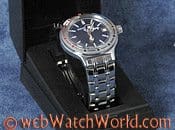 This, along with the very small lug length, makes the watch feel slightly “top heavy” on the wrist and the watch “wears small”; that is, many other 40 mm watches with a larger face and lugs will feel much bigger.
This, along with the very small lug length, makes the watch feel slightly “top heavy” on the wrist and the watch “wears small”; that is, many other 40 mm watches with a larger face and lugs will feel much bigger.
In my opinion, and a flexible and soft silicone watch band can help keep the watch tight to the wrist to make it feel more secure.
The black Amphibia and its red Hirsch silicone strap shown in the photos weighs 69 grams, a weight that feels just about right — not too light and not too heavy. Actually, for the relatively petite size of the case by today’s standards, the Amphibia has a nice heft to it and a solid presence.
Lug Width
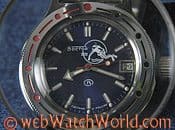 The first thing most new owners do as soon as the watch arrives is remove the bracelet (or the watch strap on the Komandirskie) and throw it away. The Amphibia bracelet actually looks very nice, but the hollow links and very cheap feel are, to say the least, not well regarded (although some owners will surely disagree!).
The first thing most new owners do as soon as the watch arrives is remove the bracelet (or the watch strap on the Komandirskie) and throw it away. The Amphibia bracelet actually looks very nice, but the hollow links and very cheap feel are, to say the least, not well regarded (although some owners will surely disagree!).
Both watches use an 18 mm wide watch strap; that is, the internal lug width is 18 mm. Although standard dive watch straps are usually 22 mm or 24 mm, there are many good 18 mm designs available in both leather and silicone, in addition to metal bracelets — although a new bracelet may easily cost more than the entire watch!
You can see in the photos of my Amphibians that none of them has the original bracelet. I have found that an 18 mm silicone watch strap with either a deployant or standard buckle, works very nicely with this watch.
Watch Strap
 As I mentioned above, the bracelet on the Amphibia is not of very high quality, to say the least. It works, but it just feels cheap. I purchased a higher quality bracelet for the blue “Scuba Dude” shown in the photos, but at $72.00, it cost more than the watch! It complements the (very) slightly more upscale character of the blue Scuba Dude Amphibian though, with its raised chrome indices.
As I mentioned above, the bracelet on the Amphibia is not of very high quality, to say the least. It works, but it just feels cheap. I purchased a higher quality bracelet for the blue “Scuba Dude” shown in the photos, but at $72.00, it cost more than the watch! It complements the (very) slightly more upscale character of the blue Scuba Dude Amphibian though, with its raised chrome indices.
Some owners put their Amphibians on a NATO-style strap, but I find those straps to be too thin for the relatively thick case of the Amphibia and it can also raise the case even higher, which I don’t think is a good idea. But, the watch does look very nice with this type of strap and NATO straps can be found in colors to match the graphics on the face also.
The rugged or “retro-classic” looks of the Amphibia call for a sporty watch strap though, and I think either the Hirsch silicone strap or the Toscana Diamond Style watch strap on the “Sailboat” Amphibian perfectly compliment the spirit of this watch. Besides, the height of the Amphibian demands a thicker strap, which is provided by the 5 mm thick lug end of the Toscana.
Setting the Amphibia and Accuracy
The Amphibia has a screw-in crown, similar to many other dive watches. But this one operates differently.
A screw-in crown usually seals against an O-ring or gasket to help keep the watch waterproof. Also, screwing in the crown helps ensure that it will not pull out unexpectedly.
The crown on the Amphibia has a loose feel when it is unscrewed; in fact, new Amphibia owners sometimes think there may be something wrong. The crown sits at the end of a long stem, which gives it a lot of play. The first stop allows the Amphibia to be manually wound. It takes a sensitive hand and some practice to pull on the crown with just a light amount of pressure, which allows the gears to catch while winding the watch.
The second stop is used to set the date and the time. The watch does not have a quick set date function, so to advance the date, there are two options. The hands can be rotated through a 24-hour cycle to bring them past midnight for the date to advance. Or, the hands can be rotated to just past midnight, then backwards to before 8:00 pm or so, then advanced again past midnight, which will advance the date one number.
The Amphibia does not have a “hacking” function; that is, the seconds hand will not stop when the crown is pulled out, which would allow a precise setting of the time. However, light clockwise pressure on the crown (as if trying to reverse the minute hand) when it is pulled out all the way will usually stop the seconds hand. On some Amphibians, this “poor man’s hack” method works whether the watch is wound down or fully powered.
I usually set my watches to an “atomic” Casio Waveceptor, which synchronizes every night to the clock of the National Institute of Standards and Technology in the U.S. I wind the Amphibia only one or two turns, just enough to get the seconds hand started. Then I’ll hold the crown to stop the seconds hand, wait until it matches the seconds hand on the Casio as it rotates, then I’ll take the pressure off the crown on the Amphibia and I’m usually all set.
This can bring the Amphibia’s seconds hand to within almost exactly one second of the seconds hand on the Casio. Then, after the second hands are synchronized, I’ll set the minute and hour hands on the Amphibia, moving them clockwise only to ensure that the seconds hand doesn’t stop again.
I own three Amphibians, and they are all very accurate, running within 10-15 seconds or so each day. This is well within the -10 to +30 seconds range claimed by Vostok for the watch (at 20 degrees Centigrade plus or minus 5). But if your Amphibia runs too fast or too slow, it’s also not too difficult to adjust the watch to speed it up or slow it down, and I’ll cover that in an upcoming article and video.
I have found on most Russian watches that it takes a few days for the movement to “bed in”. They may in fact run wildly fast or slow (usually fast), and I’ll keep them wound up and running for a few days. Then, I let them wind down and rest for a day or so, then reset the time and wind them up again. One or two cycles like this seems to have an affect and the watches then usually run very accurately. This is also the case when I haven’t worn the watch for a while, it may take a few days of winding and setting before it settles down and runs consistently.
Readability and Face
Most of the Amphibias have an easy-to-read face, but I think the black Scuba dude is probably one of the easiest to read. The contrast and the large classic arrow hour hand work very nicely. The seconds hand on most (all?) Amphibias has a very nice round indicator, filled with lume, that also adds to the readability of this watch.
I’m not a big fan of date windows. I have so many watches that I have to set each one when I wear it, and with the crude wind-backwards-wind-forwards date setting routine of the Amphibia, I don’t usually bother. So then I have a date window staring at me with an incorrect date. Since I never trust the date on the watch anyway, why bother?
Plus, the date window usually messes up the symmetry of a watch face, like on the Amphibia, where it “eats” the 3-o’clock position. The very, very cool 1967 Amphibia reproduction has a much nicer face without the date, and I’ll review that soon also.
But overall, the classic Amphibia is a very easy to read wristwatch, which is as it should be, for the primary purpose of a watch is to tell time…although too many manufacturers have forgotten that dictum.
Lume
Depending on which Amphibia style is chosen, lume can range from not good to barely acceptable. The Scuba Dude versions shown here have what I guess could be called decent lume for the money. It actually gets pretty bright but the problem is that the glow doesn’t last very long. But, when all is said and done, I guess getting any kind of lume at all on a $60.00 watch is a bonus.
Conclusion
The Vostok Amphibia is a real classic that is much beloved by collectors. The variety of case and dial styles, the low cost of the watch, the in-house movement and the robust build of this watch is always a surprise. It’s worth every penny, although the basic Amphibia must be taken for what it is.
Vostok has been attempting to make many more versions of the Amphibia, some with fancy cases and they have been using the 2416 automatic movement in a variety of other watches. The movement seems to be manufactured at various levels of quality, because some of the Russian watches with this movement seem to have a higher quality feel. I have an Aviator Automatic with the 2416 movement that has a very high-quality feel and the level of fit and finish on the watch is leagues above the basic Amphibia.
There are also variations like the 2415 (no date) movement in the 1967 Amphibia; the 2432 movement with day/night indicator and/or 24-hour number indicator across the top.
Beginning collectors who would like to experience their first automatic watch should definitely take a look at an Amphibia, either new or used. But experienced collectors and Russian watch fans also find the Amphibia a very attractive piece and once you buy one, chances are you’ll be buying several more! Definitely a highly recommended watch that is unassuming, a great value and a lot of fun!

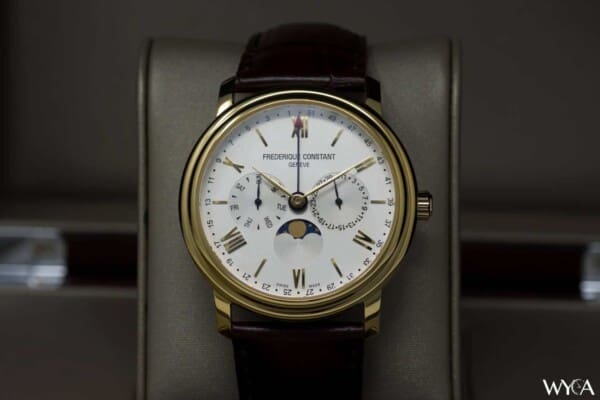


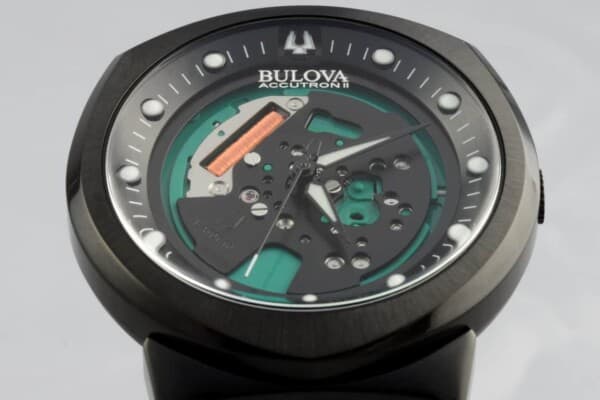
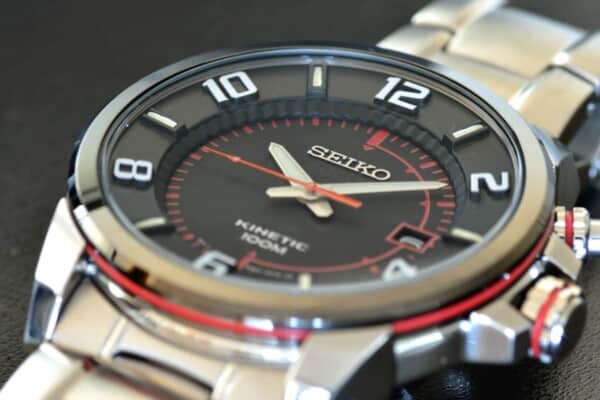
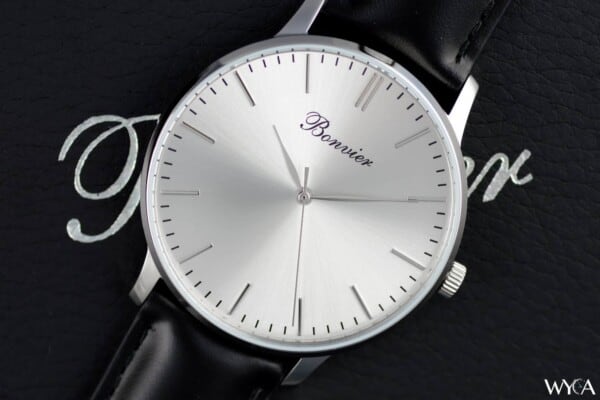
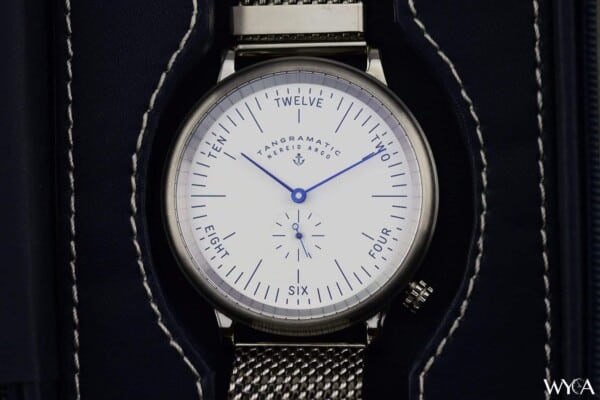

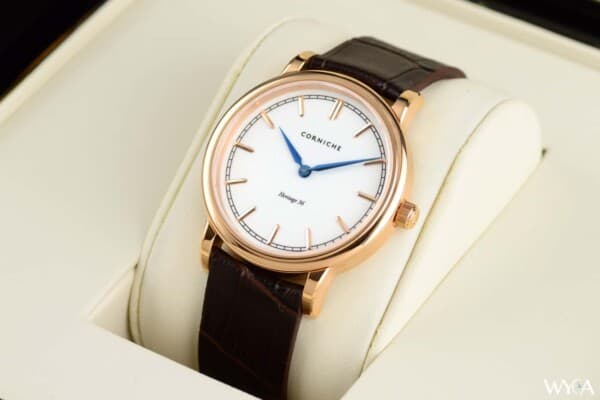

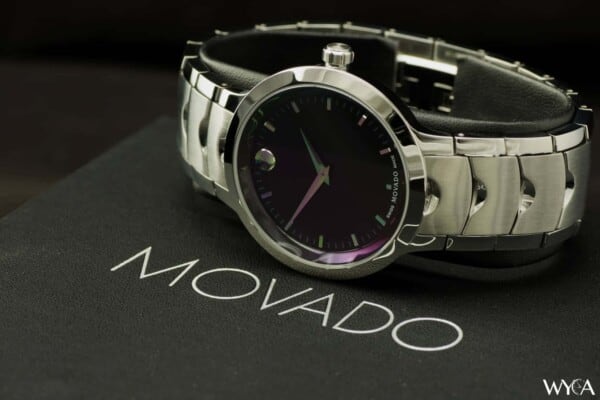
Thank you for a very thorough review. I have a bunch of these things, and they are great.
They have been reliable and good time keepers. I don’t dive but I can see that they would
hold up pretty well in adverse conditions.
Whoever wrote this has no idea what they’re talking about. Anyone who thinks the amphibia only comes in to case styles or sizes is a moron.
Great review, I think to buy a watch east or casio
Thanks for a nice review! I just picked up a used Amphibia and will use it for a daily wear piece.